Lotus rocked it with EMQX Platform, building a high-performance, super reliable global smart connected car platform. The platform's distributed cluster setup and open data interfaces helped us tackle the challenge of collecting and handling massive loads of vehicle data. Plus, EMQX Platform's flexibility and security features have our back, supporting Lotus across the globe with data compliance, affordable data storage, and awesome open intelligent services.
—— Head of Intelligent Connected Development, Lotus
Background
Lotus is a globally renowned manufacturer of supercars, often regarded alongside Ferrari and Porsche as one of the world's top three supercar brands. Founded in 1948 by Colin Chapman in the UK, Lotus has earned worldwide acclaim for its exceptional lightweight and aerodynamic designs, delivering the ultimate driving experience to its users.
In the era of smart automobiles, cars have evolved beyond mere transportation to become mobile smart terminals, reshaping our traditional perception of driving. With the trends of electrification and intelligent connectivity in the automotive industry, Lotus is actively driving the transformation of its global market, continuously enhancing the excellence of its products.
During the process of building a global intelligent connected platform, Lotus faces a series of complex data challenges such as large-scale concurrent data collection, processing, and analysis. To monitor vehicle operations in real time, improve user experience, and optimize operational management, Lotus leveraged EMQ's flagship product, EMQX Platform, to build a cross-regional intelligent connected car platform. This solution not only ensures the demands for high performance and reliability but also meets data compliance requirements in different regions.
Challenges
- Technical and Architectural Challenges: With the continuous growth in vehicle connectivity and the emergence of new services like intelligent driving and smart cabins, the platform must maintain a massive concurrent connection capacity while ensuring real-time visibility of connection status. At the same time, facing the ever-increasing data volume, the system also needs to provide sub-second real-time computational data services.
- Data Compliance: As a global automotive brand, Lotus must comply with data protection regulations in different regions worldwide, such as the European Union's General Data Protection Regulation (GDPR). These regulations impose strict requirements on the processing, storage, and transmission of personal data, increasing compliance costs and requiring Lotus to build an intelligent connected car system that meets data compliance requirements globally.
- Optimizing Data Storage Costs Without Compromising Performance: The global intelligent connected platform faces significant cost pressure in data storage and computation. To meet the requirements of vehicle development, user services, regulatory compliance, and varying data storage periods, Lotus must achieve cost-effective data storage without compromising high-performance data service capabilities.
Solution
Lotus utilized EMQX to construct its global intelligent connected car platform, taking advantage of EMQX's high performance, reliability, and compatibility, as well as its distributed cluster architecture and rich open data interfaces. The architecture design considers requirements such as rapid global deployment, layering of service and data nodes, balancing performance and high availability, disaster recovery for critical operations, and regional compliance. This results in a comprehensive solution that integrates functions including vehicle data collection, message transmission, reception and processing, and data storage.

Globalization Architecture Design
Lotus has designed a globalization architecture based on EMQX, combining global and regional nodes. The global node serves as the global data center, focusing on offline data computation, long-term data storage, global data synchronization, and global disaster recovery planning. Regional nodes are deployed in various geographic areas to handle the storage of localized sensitive information and provide data services that meet high performance and real-time requirements.
Data Management
Lotus effectively reduced data storage costs by implementing strategies such as hot and cold data management, storage-compute separation, localized storage, improved data compression ratios, data classification, and data masking. These measures also ensured real-time computing performance, secured data safety, and complied with global data regulations.
Achievements
- Closed-Loop Application of Vehicle Data: Lotus has successfully built a data closed loop consisting of "vehicle data collection - processing on the global intelligent connected platform - processing and analysis at the data center - feedback to intelligent applications." This closed loop not only connects the data-driven operational processes but also enables Lotus to leverage real-time data for intelligent applications, aid in operational data analysis, and continuously uncover the deeper value of data.
- Low-Cost, High-Efficiency Data Storage: By implementing cold and hot data management and improving data compression ratios, Lotus effectively reduces data storage costs. Simultaneously, the use of a storage-compute separation architecture ensures high-performance data services and immediate accessibility, supporting rapid querying and utilization of full historical data. Additionally, Lotus categorizes and labels data and implements desensitization and encrypted storage to meet the stringent requirements of global data compliance regulations.
- Vehicle-Cloud Simulation Testing Platform: This platform can simulate not only the records and information of real vehicles but also key vehicle-cloud collaborative components such as gateways and domain control center units (DHU) to support vehicle research and testing. The simulated vehicles can provide feedback in real environments, supporting the development of new features with 3D visualization technology. In the future, Lotus will continue to explore SIL (Software-in-the-Loop) simulation applications based on vehicle-cloud collaboration.
Conclusion
Lotus's exciting partnership with EMQ has led to the creation of a cutting-edge global intelligent connected solution. This groundbreaking innovation effectively tackles the obstacles of electrification and smart transformation in the automotive industry. The collaboration not only elevates Lotus's position in the global market but also offers fresh perspectives and guidance for advancing intelligent connected technologies throughout the automotive sector.
